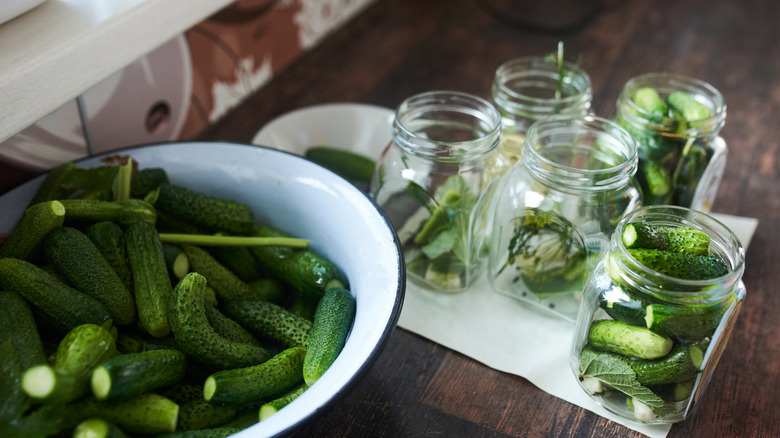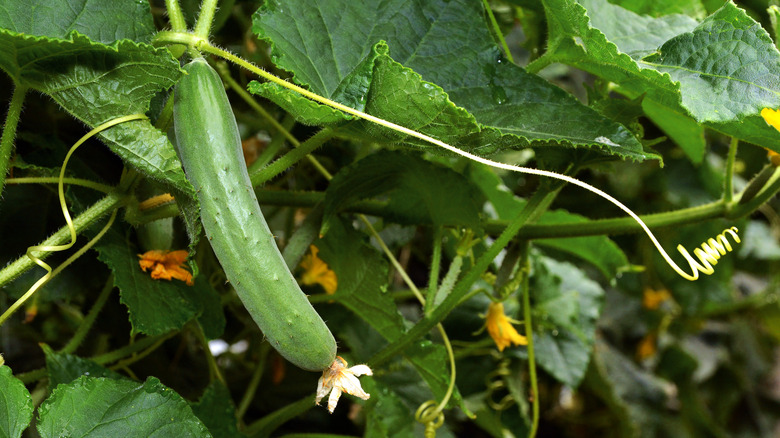Why Removing The Blossom Ends Of Your Cucumbers Before Pickling Is A Must
Pickles pair perfectly with classic gooey grilled cheese, creamy potato salad, charred burgers, tiny sliders, and even pizza. One of the best parts of that tangy, sour spear that accompanies all your sandwiches is its sharp, irresistible crunch. The winter months are all about salvaging your stash of beloved summer produce. Dip into fresh flavor during fall and winter by preserving your warm weather faves the right way. For a bite that sounds like it's straight out of a pickle commercial, it's important to properly prepare your cucumbers before pickling them. That starts with removing the blossom end of the fruit.
The cucumber's blossom end is exactly what it sounds like. It's the side opposite the stem and the spot from where the plant's bright, yellow flower once sprouted. The blossom contains an enzyme that softens the pickle. That blossom end can pulverize even the most well-intentioned pickling projects by softening them, regardless of carefully plucked cucumbers and beautifully flavorful brine, so it's best to remove it.
Bye, bye blossom
During the cucumber's life cycle, sunny yellow flowers burst from the plant. In many varieties, first the male flowers make their debut, and the female flowers show up shortly after. When the female flower opens, a small, pale green cucumber will appear at its base. This stage occurs just a matter of days before the cucumber grows deep green and ready to harvest.
If you aren't growing your own veggies and are turning to the market to provide your pickling supply, it might be a little harder to determine which side of the cucumber is the blossom end. To discern which end of the gherkin has got to go, give the cucumber a close inspection. The blossom end will look rough and raised, while the stem side should be smooth. To protect your pickles from a flimsy fate and ensure firm cukes, simply slice off a little bit of that blossom end before seasoning, brining, sealing, and storing. That sunny yellow flower is also edible, much like the summer zucchini blossoms you've probably seen folded and fried in fritter recipes.

